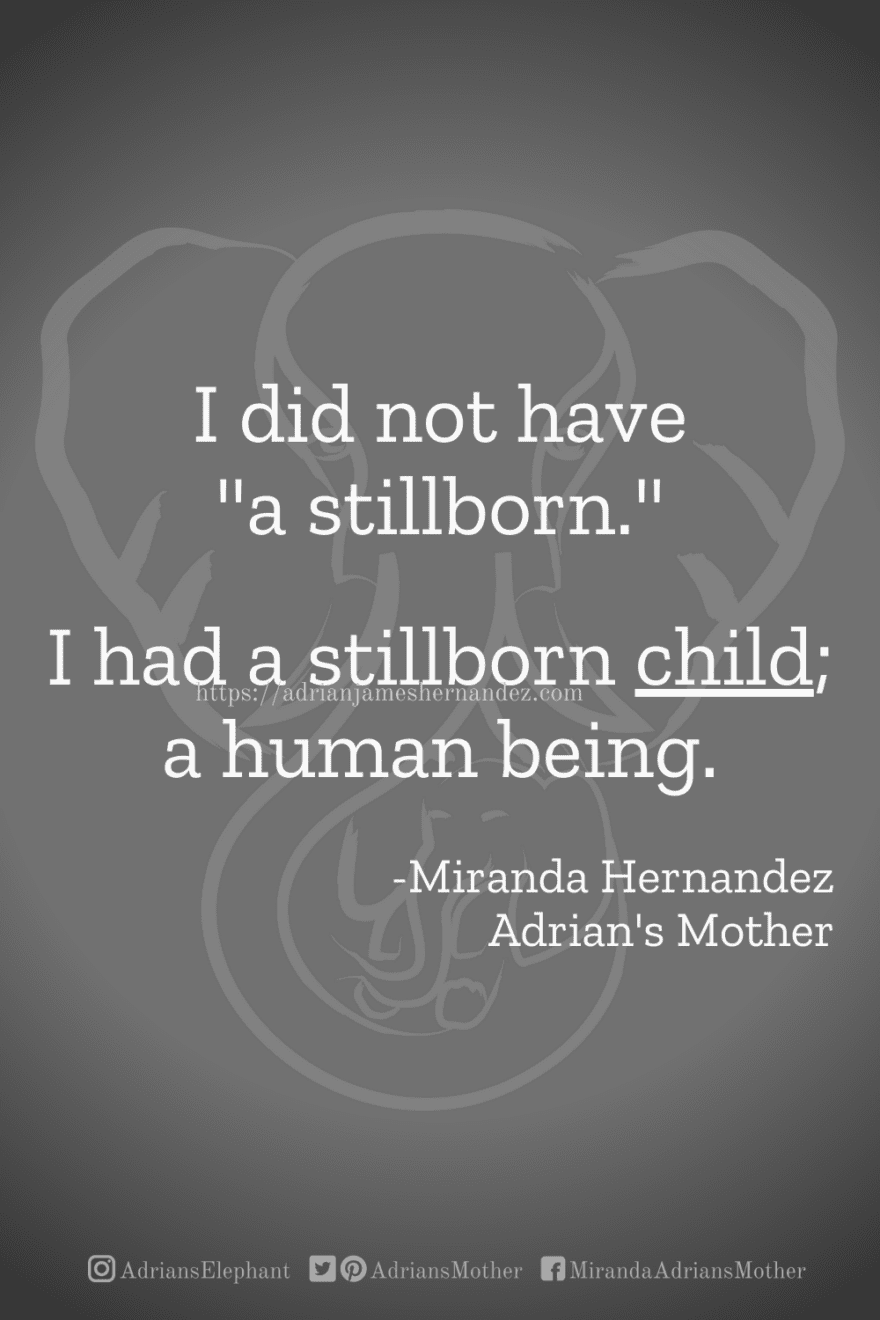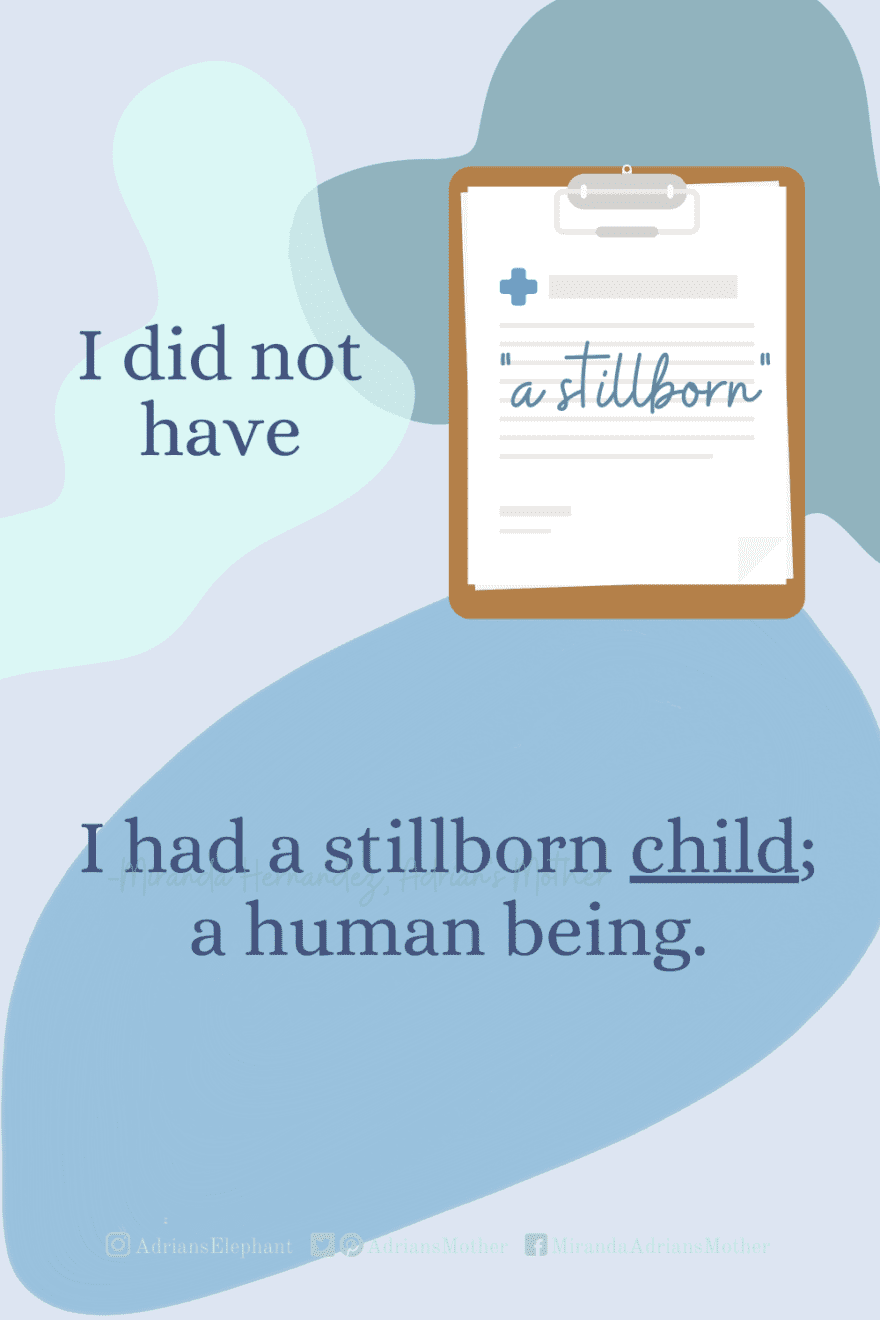Stillbirth is the process or experience of giving birth to a child who has died in the womb at or after 20 weeks gestation*. A majority of these deaths occur prior to the start of labor, but a small minority occur during labor.
The term stillbirth is also sometimes used to refer to the death itself, although the technical term for this death is intrauterine fetal demise (IUFD).
A child who dies in the womb at or after 20 weeks gestation is said to be stillborn. This term is sometimes used as a noun, but many parents of stillborn children prefer to use the term as an adjective, e.g. “stillborn child” instead of “a stillborn.”
This is a personal pet peeve of mine, and so I created the following meme:

Related: Graphics Blog: I did not have “A Stillborn”
Some other terms you may want to be familiar with:
- Miscarriage – the process of losing a pregnancy and/or giving birth to a child prior to 20 weeks* gestation. The term miscarriage is often used to refer the death of a child prior to 20 weeks gestation, but some miscarried babies are born alive and then die after birth.
- Neonatal death – death of a newborn within the first 28 days of life
- Perinatal death – an umbrella term for fetal deaths after 28 weeks gestation (intrauterine fetal demise) and infant death prior to 7 days of life (neonatal death)
* The dividing line between miscarriage and stillbirth actually varies by location. The dates I use in my answer refer to the definition of stillbirth in the United States. Other countries may use gestational ages between 20–28 weeks.
References:
What is Stillbirth? | CDC
Neonatal death (March of Dimes)
Miscarriage – Symptoms and causes (Mayo Clinic)
Standard Terminology for Fetal, Infant, and Perinatal Deaths (American Association of Pediatricians)
(Originally published on Quora.com, in response to the question: What is the difference between stillbirth and stillborn?)














